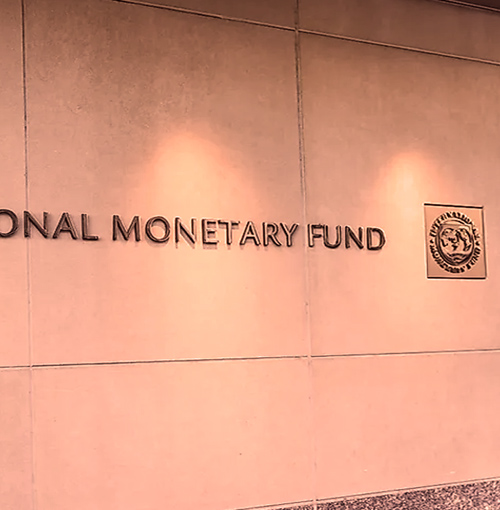
The Economic Implications of Tapering: A Detailed Overview
Diving into the realm of central banking, one stumbles upon the term 'tapering'. It's a buzzword often heard in financial market discussions, particularly when economic recovery is on the horizon. But what exactly is tapering? And how does it influence financial markets? This comprehensive guide will answer these questions and delve deeper into the function and impact of tapering as implemented by the Federal Reserve, the central banking system of the United States.
Unearthing the Mystery of Tapering
Tapering is a financial term primarily associated with the strategic policy maneuvers executed by central banks, specifically during periods of economic recovery. Its primary purpose is to moderate and eventually cease the monetary stimulus provided during challenging economic times, such as a recession. Typically, during such periods, central banks resort to a policy of quantitative easing, involving the purchase of asset-backed securities from member banks. This influx of money into the economy is designed to jumpstart recovery and spur growth. Tapering steps in when this quantitative easing strategy has successfully stabilized the economy. The Federal Reserve, in the United States, is a prime example of an institution that not only modifies its discount rate or reserve requirements but also reduces its asset holdings during tapering.
Moreover, it's vital to understand that the process of tapering is not undertaken lightly by central banks. It requires an in-depth analysis of current economic conditions, including a careful consideration of key indicators such as inflation rates, employment levels, and overall economic growth. Thus, the decision to initiate tapering is a signal that the central bank has confidence in the economy's ability to sustain growth without additional stimulus.
Important: Tapering is not a sign of economic contraction, but a signal of economic stabilization and recovery.
Tip: As an investor, closely monitor central bank communications for signs of impending tapering, as it can have significant effects on investment portfolios.
Tapering and the Ripple Effect on Financial Markets
Central banks often employ an expansionary policy to resuscitate an economy in recession. However, such policies, if not reversed in due time, can potentially give rise to inflation and contribute to asset price bubbles. The process of tapering serves as a crucial first step towards retracting from a monetary stimulus program that has served its purpose. It's a delicate dance of signaling the planned slowdown in asset purchases and concurrently managing market expectations, thereby reducing uncertainty. Financial markets, however, have a notorious history of overreacting to the idea of reduced stimulus, triggering what is colloquially known as a "taper tantrum."
In addition, it's important to remember that while tapering might trigger initial market volatility, it can also present opportunities for investors. In particular, those with diversified portfolios may find attractive investment options in an environment of rising interest rates, especially within sectors that tend to benefit from such conditions.
Remember: Market volatility is common during tapering, but it also presents investment opportunities.
The Story of Federal Reserve's Tapering Strategy
In response to the global economic catastrophe unleashed by the COVID-19 pandemic, the Federal Reserve implemented an aggressive quantitative easing plan in March 2020. This included more than $700 billion in asset purchases, and by June 2020, a quantitative easing program was established to purchase $80 billion in Treasury securities and $40 billion in mortgage-backed securities each month. As the economy started to bounce back in the spring of 2021, tapering began in earnest. However, the threat of rising costs in June 2022 forced the Federal Reserve to change course, marking an end to its policy of low-interest rates and intensive bond market intervention.
In fact, the Federal Reserve's response to the COVID-19 pandemic and subsequent tapering strategy is a classic case study in macroeconomic policy. The Fed's actions serve as a reminder of the delicate balance central banks must maintain in stimulating economic growth while mitigating inflation risk.
Interesting Fact: The Federal Reserve's balance sheet expanded to nearly $9 trillion in response to the COVID-19 pandemic, illustrating the sheer scale of its quantitative easing program.
Timing and Impact of Tapering
Quantitative easing is an essential tool employed by the Fed to stimulate the economy. These measures, however, are not meant to be permanent fixtures. Once the desired outcomes have been achieved, it's essential to start withdrawing the stimulus carefully. An abrupt halt might push the economy into recession, while a delayed response might result in inflation. Tapering, thus, provides a balanced, transitional phase between an economy that's been stimulated and one that is heading towards an accelerated inflationary phase.
Tip: Pay attention to economic indicators such as inflation rates and GDP growth, as they can give a sense of when central banks might begin tapering.
The delicate timing of tapering also plays a critical role in shaping economic recovery. A delay can lead to overheated economic activity and rampant inflation, while premature action can stunt economic growth and potentially trigger a recession.
Important: The timing of tapering is crucial for a smooth economic recovery.
Tapering vs. Tightening: Unpacking the Differences
Tightening, also known as contractionary policy, is a different beast altogether. When the economy seems to be growing too fast or when inflation threatens to spiral out of control, the central bank steps in to slow down growth and control spending. This could involve increasing short-term interest rates or selling assets through open market operations. Tapering, on the other hand, is the transitional phase from an expansionary to a contractionary monetary policy.
Additionally, tapering is more gradual and less likely to cause economic shocks compared to tightening. While both aim to normalize monetary policy, tightening is typically used when the economy is showing signs of overheating, and inflation needs to be reined in swiftly.
Fact: While tapering and tightening may seem similar, they are used in different economic contexts and have different impacts on the economy.
Tracing Tapering Through the 2007-2008 Financial Crisis
One of the most prominent examples of tapering in recent history was the aftermath of the 2007-08 financial crisis. The Federal Reserve resorted to a massive quantitative easing program in response to the crisis. The tapering process began in June 2013, after the then-Fed Chair, Ben Bernanke, announced that the number of assets purchased monthly would be reduced, provided economic conditions remained favorable. By the end of 2013, it was concluded that the quantitative easing measures had achieved their goal, and thus, the phase of tapering began.
Furthermore, the 2007-08 financial crisis served as a significant testing ground for tapering as a concept and policy tool. The Federal Reserve's implementation and subsequent unwinding of its quantitative easing program during this period set a precedent for central banks worldwide.
Interesting Fact: The quantitative easing program implemented by the Federal Reserve in response to the 2007-08 financial crisis increased the Fed's balance sheet to $4.5 trillion.
The Final Word on Tapering
To summarize, tapering is a crucial phase in the life cycle of a monetary stimulus program. It's initiated when the economy has sufficiently stabilized, and the central bank deems it fit to begin winding down the expansionary measures. This process might include adjustments to the discount rate or reserve requirements and, in the case of the Federal Reserve, a reduction in asset holdings. The intricacies of tapering require a fine balancing act to ensure a smooth transition and prevent adverse effects on financial markets.
Key Points:
Tapering is a process by which central banks start reducing the monetary stimulus provided during a recession.
The timing of tapering is crucial; an abrupt halt might lead to a recession, while a delayed response might result in inflation.
Tapering often causes volatility in the financial markets, but also presents potential investment opportunities.
Tapering and tightening are different; tapering is the transitional phase from an expansionary to a contractionary policy, while tightening is a more aggressive contractionary measure.
Tapering is a signal of economic recovery and the readiness of an economy to sustain growth without additional stimulus.
In essence, tapering represents a crucial aspect of the economic recovery process. It requires a finely tuned approach from central banks to ensure a smooth transition from stimulus-induced growth to natural, sustainable economic growth.
- Share this article





